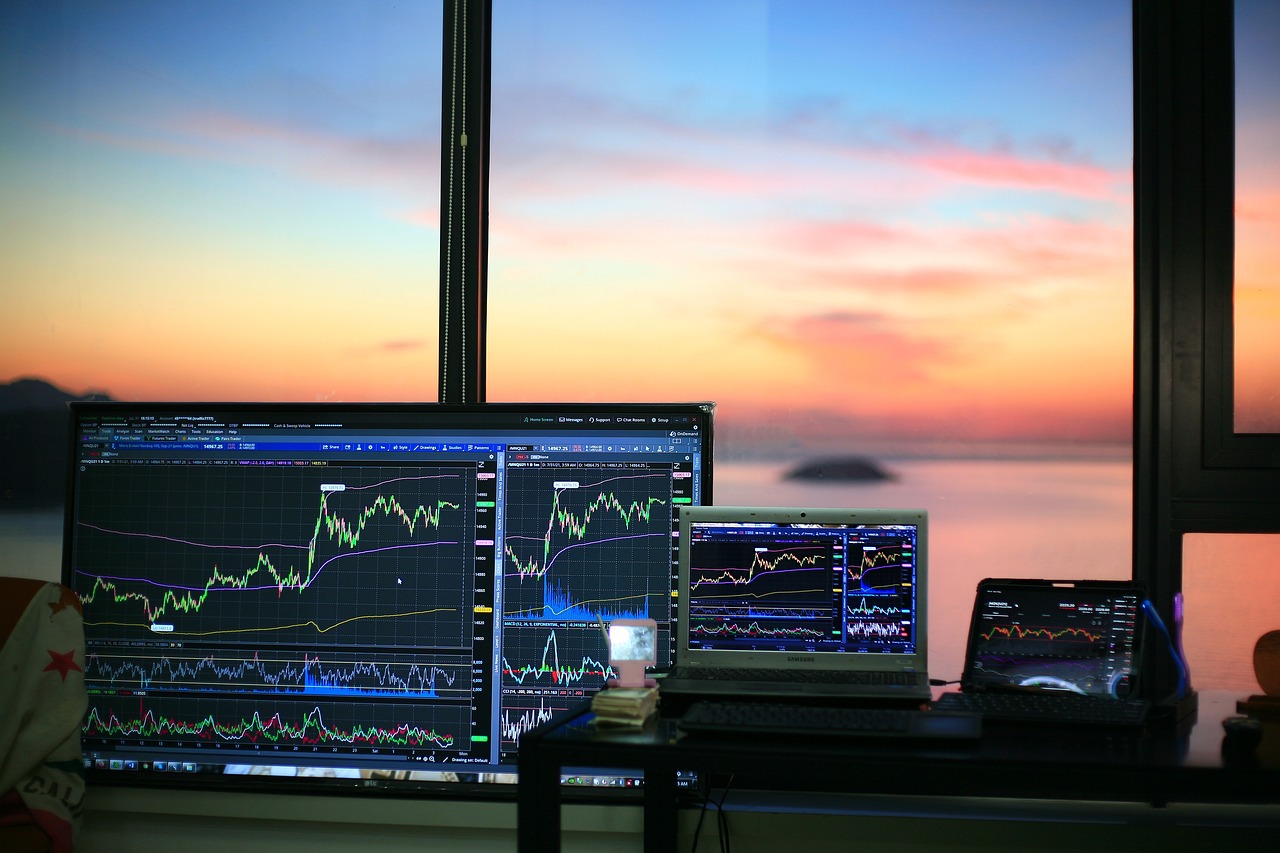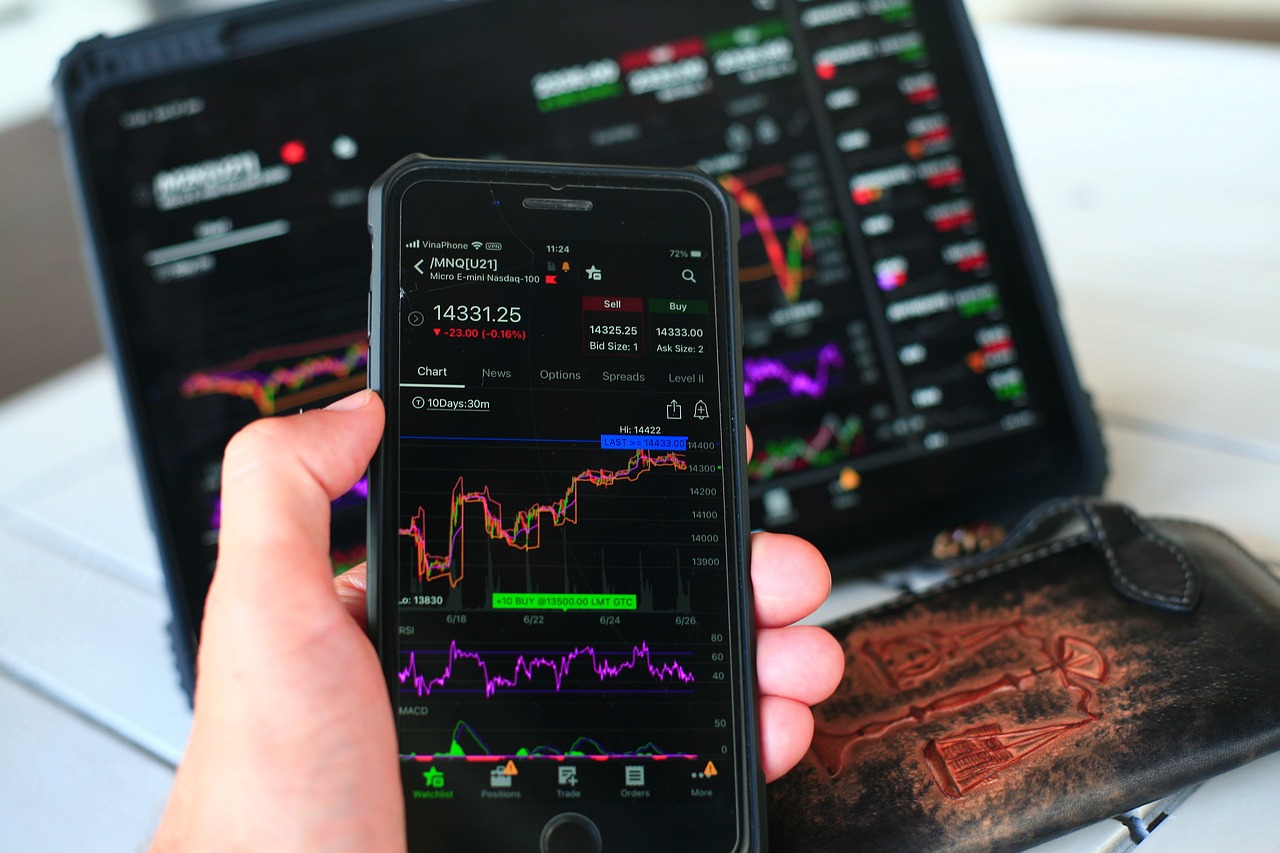The Role of Market Psychology in Trading Strategies
Market psychology plays a pivotal role in shaping trading strategies and influencing investor behavior. It's fascinating how the collective emotions and sentiments of traders can drive market trends, often leading to unexpected outcomes. Have you ever wondered why stock prices can swing wildly on seemingly trivial news? That's the power of market psychology at work. Understanding these dynamics is crucial for traders who want to anticipate market movements and make informed decisions. By delving into the emotional factors that impact financial markets, we can uncover valuable insights that can enhance our trading strategies.
So, what exactly is market psychology? In simple terms, it's the study of how the emotions of investors—fear, greed, excitement, and panic—affect their trading decisions. Imagine a crowd at a concert: when the lead singer hits the high note, the crowd erupts in cheers. Similarly, in the financial markets, collective emotional responses can lead to significant price movements. For traders, recognizing these psychological triggers can be the key to gaining a competitive edge. By understanding market psychology, traders can better anticipate shifts in market sentiment and adjust their strategies accordingly.
Fear and greed are the two dominant emotions that drive market behavior. These emotions can lead to irrational decision-making, causing traders to buy high and sell low, which completely contradicts the fundamental principles of investing. Fear often manifests during market downturns, leading to panic selling, while greed takes hold during bullish trends, encouraging overexuberance. It's a classic tug-of-war that can create volatility in the markets. Understanding how these emotions influence trading can help investors develop strategies that are less susceptible to emotional turmoil.
One of the most prominent manifestations of fear in trading is the Fear of Missing Out (FOMO). When traders see others profiting from a rising asset, they may feel an overwhelming urge to jump in, often leading to impulsive decisions. This rush can create a cycle of buying that drives prices up even further, but it can also lead to significant losses when the market corrects itself. FOMO is particularly dangerous because it can cloud judgment and lead to a herd mentality, where traders follow the crowd rather than sticking to their strategies. Recognizing FOMO is crucial for maintaining a rational trading mindset.
To combat the influence of FOMO, traders can implement disciplined trading strategies designed to keep emotions in check. Here are a few practical approaches:
- Set Clear Goals: Define your trading objectives and stick to them.
- Use Stop-Loss Orders: Protect your investments by setting predetermined exit points.
- Practice Mindfulness: Take a step back and assess your emotional state before making decisions.
By following these strategies, traders can create a more rational approach to trading, reducing the impulsivity driven by FOMO.
Looking back at historical market events, we can see how FOMO has dramatically influenced price movements. For instance, during the dot-com bubble in the late 1990s, many investors rushed to buy tech stocks, driven by the fear of missing out on the next big thing. This led to inflated valuations and, ultimately, a significant market crash. Another example is the recent surge in meme stocks, where social media buzz created a frenzy, causing prices to skyrocket and then plummet. These case studies highlight the profound impact of FOMO on market dynamics and the importance of maintaining a disciplined approach to trading.
On the flip side, greed often leads to overconfidence in trading decisions. When traders experience a string of successes, they may become overly optimistic about their abilities, resulting in increased risk-taking. This overconfidence can skew judgment, leading to poor investment choices and significant financial losses. It's essential for traders to recognize the signs of greed and manage their emotions effectively to avoid falling into this trap.
Traders are often influenced by various cognitive biases that distort their decision-making processes. Identifying these biases is crucial for developing effective trading strategies. For example, Anchoring Bias occurs when traders rely too heavily on initial information, making it difficult to adjust their expectations based on new data. This can lead to missed opportunities or unnecessary losses. Similarly, Confirmation Bias drives traders to seek information that confirms their existing beliefs, potentially blinding them to contrary evidence. By being aware of these biases, traders can take steps to counteract their effects and make more rational decisions.
Anchoring bias can significantly impact trading strategies. For instance, if a trader buys a stock at $100, they may anchor their expectations to that price, failing to adjust their perspective as market conditions change. Recognizing this bias is the first step toward mitigating its impact. Traders can combat anchoring by regularly reassessing their positions and being open to new information.
Confirmation bias can be equally detrimental. Traders often seek out news and analysis that supports their pre-existing views, ignoring evidence that contradicts them. This can lead to a skewed understanding of market conditions and poor decision-making. To counteract confirmation bias, traders should actively seek diverse perspectives and challenge their assumptions.
Q: How can understanding market psychology improve my trading strategies?
A: By understanding market psychology, you can anticipate how emotions like fear and greed may influence market movements, allowing you to make more informed and rational trading decisions.
Q: What are some common emotional pitfalls to avoid in trading?
A: Common pitfalls include FOMO, overconfidence, and cognitive biases such as anchoring and confirmation bias. Recognizing these emotions can help you maintain a disciplined approach.
Q: How can I develop a disciplined trading strategy?
A: Set clear trading goals, use stop-loss orders, and practice mindfulness to keep your emotions in check. Regularly review and adjust your strategy based on market conditions.

Understanding Market Psychology
Market psychology is a fascinating yet complex concept that delves deep into the collective emotions and sentiments of investors. It’s not just about numbers and charts; it’s about understanding the **human element** that drives market trends. Picture a bustling marketplace where every trader is influenced by their fears, hopes, and dreams. This emotional landscape significantly impacts trading decisions and can lead to **dramatic shifts** in market dynamics.
When we talk about market psychology, we’re essentially discussing the **emotional currents** that flow through the financial markets. These currents can be influenced by various factors, including news events, economic reports, and even social media trends. For instance, a sudden announcement about a company's earnings can create a wave of optimism or pessimism, causing traders to react almost instinctively. This is where understanding market psychology becomes crucial for anyone looking to navigate the trading waters effectively.
To illustrate this further, let’s consider the **concept of herd behavior**. Just as sheep tend to follow the flock, traders often mimic the actions of those around them. If a few influential traders start buying a stock, others may jump on the bandwagon, fearing they might miss out on potential gains. This phenomenon can lead to **market bubbles** or **crashes**, as collective behavior drives prices beyond their intrinsic value. It’s this intertwining of emotion and decision-making that makes market psychology such a vital aspect of trading strategies.
Moreover, understanding market psychology allows traders to anticipate market movements with greater accuracy. By recognizing the emotional triggers that influence decisions, traders can position themselves to take advantage of market inefficiencies. For example, during periods of high volatility, emotions like fear and greed can lead to **irrational trading actions**. Recognizing these patterns enables traders to develop strategies that can either capitalize on these movements or protect their investments from potential downturns.
In summary, market psychology plays a critical role in shaping trading strategies. By understanding the emotional factors that drive market behavior, traders can make more informed decisions and navigate the complexities of the financial landscape with greater confidence. This understanding not only enhances their trading effectiveness but also helps them manage their own emotions, leading to a more disciplined approach to investing.

The Impact of Fear and Greed
In the world of trading, fear and greed are powerful emotions that can significantly influence investor behavior and market trends. These two feelings often act as the driving forces behind the decisions traders make, sometimes leading to both extraordinary gains and devastating losses. Understanding how fear and greed manifest in the trading environment is crucial for anyone looking to navigate the financial markets successfully.
Fear, particularly the fear of losing money or missing out on potential profits, can compel traders to make hasty decisions. This emotional response can result in a phenomenon known as panic selling, where investors rush to sell their assets at any price to avoid further losses. This behavior not only affects individual portfolios but can also lead to significant market downturns. On the flip side, greed can create an environment where traders become overly confident in their strategies, often leading them to hold onto losing positions in the hope that the market will turn in their favor. This overconfidence can cloud judgment and result in increased risk-taking, ultimately jeopardizing their financial stability.
The interplay between fear and greed can create a volatile trading atmosphere. For instance, during a market rally, greed may lead traders to become overly enthusiastic, driving prices up to unsustainable levels. Conversely, when the market starts to decline, fear can trigger a mass exodus, causing prices to plummet even further. Understanding this cycle can help traders develop strategies to navigate the emotional landscape of trading.
To illustrate the impact of fear and greed, consider the following table that outlines typical behaviors associated with each emotion:
| Emotion | Typical Behavior | Market Impact |
|---|---|---|
| Fear | Panic selling, avoiding risk | Market downturns, increased volatility |
| Greed | Overconfidence, holding losing positions | Market bubbles, inflated asset prices |
It's essential for traders to recognize these emotional triggers and develop a plan to mitigate their effects. By adopting a disciplined approach and focusing on data-driven strategies, traders can avoid falling into the traps set by fear and greed. This might involve setting clear entry and exit points for trades, utilizing stop-loss orders, and maintaining a diversified portfolio to spread risk.
Ultimately, the key to successful trading lies in understanding that while fear and greed are natural human emotions, they should not dictate trading decisions. By fostering a calm and rational mindset, traders can better navigate the unpredictable waters of the financial markets.
- What is market psychology? Market psychology refers to the collective emotions and sentiments of investors that drive market trends.
- How do fear and greed affect trading? Fear can lead to panic selling, while greed can result in overconfidence and increased risk-taking.
- What strategies can help combat FOMO? Implementing disciplined trading strategies, setting clear goals, and using stop-loss orders can help mitigate FOMO.

Fear of Missing Out (FOMO)
The phenomenon known as Fear of Missing Out, or FOMO, is a powerful emotional driver in the world of trading. Imagine standing on the sidelines of a thrilling roller coaster, watching others scream in excitement as they take the plunge. That feeling of longing, of wanting to be part of the action, can be overwhelming. In trading, FOMO manifests itself when investors feel compelled to jump into a market or asset, fearing they might miss out on potential profits. This impulse often leads to impulsive trading decisions that can have dire consequences.
FOMO is particularly prevalent during market rallies or when a stock is trending upward. Investors may see rapid price increases and feel an urgent need to buy in before it’s too late. However, this rush can lead to irrational behaviors, such as buying at inflated prices or ignoring fundamental analysis. The emotional high of potential gains can cloud judgment, resulting in decisions that are not based on sound strategy but rather on the desire to not be left behind.
To better understand the implications of FOMO, let's consider a few key points:
- Market Volatility: FOMO can contribute to increased volatility in the market, as many investors rush to buy or sell based on emotional reactions rather than rational analysis.
- Short-Term Focus: Traders driven by FOMO often prioritize short-term gains over long-term strategies, which can lead to missed opportunities and losses.
- Herd Mentality: When a significant number of investors act on FOMO, it can create a herd mentality, further driving up prices and increasing the risk of a market correction.
In essence, FOMO can distort the natural ebb and flow of the market, creating bubbles and subsequent crashes. As traders become aware of this emotional trap, it’s essential to develop strategies to combat these feelings. By recognizing the signs of FOMO, traders can take a step back and evaluate their decisions more critically, rather than succumbing to the rush of emotion. This can involve setting clear trading goals, sticking to a well-defined plan, and practicing patience. After all, the market will always be there, and the next opportunity will come around again.
In conclusion, while FOMO can be an exhilarating force that drives traders to action, it is crucial to understand its potential pitfalls. By fostering a disciplined approach and maintaining a rational mindset, traders can navigate through the waves of emotion and make decisions that align with their overall trading strategies.
What is FOMO in trading?
FOMO, or Fear of Missing Out, refers to the anxiety that traders feel when they believe they might miss out on profitable investment opportunities, leading to impulsive decisions.
How can I recognize FOMO in my trading?
You can recognize FOMO by noticing feelings of anxiety when you see others making profits, feeling pressured to act quickly, or making trades without thorough analysis.
What strategies can help combat FOMO?
Implementing a disciplined trading plan, setting clear goals, and practicing patience can help mitigate the effects of FOMO and lead to more rational decision-making.

Strategies to Combat FOMO
Fear of Missing Out, or FOMO, can be a trader's worst enemy. It often leads to impulsive decisions that can wreak havoc on investment portfolios. To combat this emotional rollercoaster, it's crucial to implement disciplined strategies that keep you grounded. First and foremost, setting clear trading goals is essential. By defining what you want to achieve, you can create a roadmap that helps you stay focused. This clarity can significantly reduce the temptation to jump into trades simply because everyone else seems to be doing so.
Another effective strategy is to develop a trading plan that outlines your entry and exit points, risk tolerance, and the criteria for making trades. This structured approach allows you to stick to your plan, even when market excitement is at its peak. When you have a plan in place, it becomes easier to resist the urge to act impulsively. Additionally, consider implementing stop-loss orders. These tools can help you minimize losses if a trade doesn't go as planned, providing a safety net that can ease the anxiety that often accompanies FOMO-driven decisions.
Moreover, practicing mindfulness techniques can be incredibly beneficial. Taking a moment to breathe, reflect, and assess your emotions can help you gain clarity before making a trade. This pause can be the difference between a well-thought-out decision and a regrettable impulse. It’s also helpful to engage in regular self-assessment. After each trading day, take time to review your trades and decisions. Ask yourself if any actions were driven by FOMO and how you can avoid similar situations in the future.
Lastly, consider surrounding yourself with a supportive community of traders. Sharing experiences and strategies with others can provide valuable insights and help you stay accountable. A strong network can remind you that you are not alone in facing these challenges and can offer different perspectives that might help you think rationally.
In summary, combating FOMO requires a combination of clear goals, structured plans, emotional awareness, and community support. By integrating these strategies into your trading routine, you can navigate the markets with confidence, reducing the emotional turmoil that often leads to hasty decisions. Remember, the key is to remain disciplined and focused on your long-term objectives rather than getting swept up in the frenzy of the moment.
- What is FOMO in trading? FOMO, or Fear of Missing Out, refers to the anxiety traders feel when they believe they are missing profitable opportunities, often leading to impulsive trading decisions.
- How can I avoid FOMO? You can avoid FOMO by setting clear trading goals, developing a solid trading plan, using stop-loss orders, practicing mindfulness, and engaging with a supportive trading community.
- Why is a trading plan important? A trading plan provides structure and helps you make informed decisions, reducing the influence of emotional impulses like FOMO.

Case Studies of FOMO in Action
Fear of Missing Out, or FOMO, has been a driving force in numerous market events, often leading to significant price swings and irrational trading behavior. One of the most notable examples occurred during the dot-com bubble of the late 1990s. As technology stocks began to soar, investors, driven by the fear of missing out on the next big tech success, rushed to buy shares of companies with little to no earnings, simply because they were part of the "next big thing." This frenzy created an unsustainable market environment where valuations skyrocketed beyond reason, ultimately leading to a dramatic crash in 2000.
Another telling case study is the phenomenon surrounding Bitcoin and other cryptocurrencies in 2017. As Bitcoin's price surged from under $1,000 to nearly $20,000 within a year, countless investors jumped on the bandwagon, fearing they would miss the opportunity to get rich quick. This mass hysteria resulted in extreme volatility, with prices often swinging wildly in short periods. Many investors who bought in during the peak faced significant losses when the bubble burst, illustrating how FOMO can lead to poor investment decisions.
To further illustrate the impact of FOMO, let’s consider a few key points from these case studies:
| Case Study | Event | Outcome |
|---|---|---|
| Dot-Com Bubble | Late 1990s tech stock surge | Massive market crash in 2000 |
| Bitcoin Surge | 2017 price increase | Significant losses post-peak |
These examples highlight how FOMO can create a bandwagon effect, where investors flock to buy assets simply because others are doing so, rather than based on sound analysis. The emotional rush can overshadow rational judgment, leading to decisions that are more about fear than strategy. It's essential for traders to recognize these patterns within themselves and the market to make more informed choices.
Ultimately, the key takeaway from these case studies is that while FOMO can drive short-term gains, it often leads to long-term financial pain. Recognizing the signs of FOMO and implementing strategies to counteract its influence is crucial for any trader looking to navigate the turbulent waters of financial markets.
- What is FOMO in trading? FOMO stands for Fear of Missing Out, which refers to the anxiety that an investor feels when they believe they are missing a profitable opportunity in the market.
- How can I recognize FOMO in my trading? Signs of FOMO include making impulsive trades, ignoring your trading plan, and feeling an overwhelming urge to buy when others are buying.
- What strategies can help mitigate FOMO? Establishing a disciplined trading plan, setting clear entry and exit points, and practicing patience can help counteract FOMO.

Greed and Overconfidence
When it comes to trading, greed and overconfidence are like two sides of the same coin. They often go hand in hand and can lead traders down a treacherous path. Imagine standing on the edge of a cliff, feeling invincible because you've just scored a big win. That rush can easily cloud your judgment, making you believe that every decision you make is golden. But here's the kicker: this overconfidence can lead to increased risk-taking, which can spell disaster for your trading account.
Greed can distort your perception of reality. You might think, “If I made 20% last month, why not aim for 40% this month?” This kind of thinking can lead to a vicious cycle of chasing higher returns without considering the potential risks. The allure of quick profits can blind you to the fundamental principles of sound trading. It’s essential to remember that just because the market is rising doesn’t mean it will continue to do so. Like a roller coaster, markets have their ups and downs, and getting too greedy can make you forget to buckle up.
To illustrate this point, let’s look at a hypothetical scenario. Imagine a trader named Alex who just scored big on a tech stock. Flush with cash and confidence, Alex decides to invest heavily in a new startup without doing proper research. The startup, however, turns out to be a dud, and Alex loses a significant portion of his investment. This is a classic case of overconfidence leading to poor decision-making.
Traders often fall into the trap of believing they can predict market movements based on their previous successes. This is where cognitive biases come into play. For instance, the illusion of control can make traders think they have more influence over the market than they actually do. They might ignore warning signs or dismiss contrary opinions, believing they are on the right track. This can create a dangerous environment where traders are not only risking their capital but also their financial future.
So, how can you combat greed and overconfidence in your trading strategy? Here are a few practical tips:
- Set Realistic Goals: Instead of aiming for the stars, set achievable targets based on market conditions and your risk tolerance.
- Practice Risk Management: Use stop-loss orders and diversify your portfolio to protect against significant losses.
- Stay Informed: Regularly educate yourself about market trends and economic indicators to make informed decisions.
Remember, trading is not just about making money; it’s about making smart decisions. By keeping your emotions in check and recognizing the signs of greed and overconfidence, you can enhance your trading strategy and maintain a healthier relationship with the market.
1. What is the difference between greed and overconfidence in trading?
Greed refers to the desire for more profits, often leading to risky decisions, while overconfidence is the belief that one can predict market movements accurately, which can result in underestimating risks.
2. How can I recognize if I'm being influenced by greed?
If you find yourself making impulsive trades or ignoring your trading plan in pursuit of higher returns, it may be a sign that greed is influencing your decisions.
3. What are some effective strategies to manage overconfidence?
Setting realistic goals, practicing risk management, and seeking feedback from other traders can help mitigate the effects of overconfidence.

Behavioral Biases in Trading
When it comes to trading, the mind can often be your worst enemy. Behavioral biases are the sneaky little gremlins that distort our judgment and lead us to make decisions that we might not otherwise consider. These biases are like optical illusions for the brain, causing us to see things not as they are, but as we want them to be. Understanding these biases is crucial for any trader looking to enhance their strategies and improve their overall performance in the market.
One of the most common biases is anchoring bias. This occurs when traders cling too tightly to initial information, like a ship anchored to a dock. For instance, if a trader hears that a stock is worth $100, they might anchor their expectations around that number, even if new information suggests otherwise. This can lead to poor decision-making, as they might ignore significant changes in market conditions that indicate the stock should be valued differently. Recognizing and breaking free from this mental anchor can be a game-changer for traders. It’s essential to continuously reassess your positions based on the latest data rather than relying on outdated information.
Another prevalent bias is confirmation bias, where traders tend to seek out information that confirms their existing beliefs while disregarding evidence that contradicts them. Imagine a detective who only looks for clues that support their theory, ignoring all other leads. This bias can severely limit a trader's ability to adapt to changing market conditions. To combat this, it’s vital to actively seek out diverse perspectives and challenge your own assumptions. By doing so, you can create a more balanced view of the market and make more informed decisions.
To illustrate the impact of these biases, let's take a look at a simple
| Behavioral Bias | Description | Impact on Trading |
|---|---|---|
| Anchoring Bias | Relying too heavily on initial information | Leads to poor decision-making based on outdated data |
| Confirmation Bias | Seeking information that supports existing beliefs | Limits adaptability and hinders objective analysis |
| Overconfidence Bias | Believing one has superior knowledge or skills | Encourages excessive risk-taking and potential losses |
| Loss Aversion | Fearing losses more than valuing gains | Can lead to holding onto losing trades too long |
Understanding these biases is just the first step. The next step is actively working to mitigate their effects. One effective method is to maintain a trading journal. By documenting your trades and the reasoning behind them, you create a record that can help you identify patterns in your decision-making. This practice not only fosters accountability but also provides insights into your emotional triggers, allowing you to make more rational choices in the future.
Another strategy is to establish clear rules for your trading strategy. By setting specific criteria for entering and exiting trades, you can reduce the influence of emotional decision-making. Think of it as having a roadmap for your trading journey; it keeps you on track and less susceptible to the whims of market psychology.
In summary, being aware of behavioral biases in trading is essential for any trader who wants to succeed in the financial markets. By recognizing these biases and implementing strategies to counteract them, you can improve your decision-making process and increase your chances of achieving your trading goals.
- What are behavioral biases in trading?
Behavioral biases are psychological factors that can distort a trader's decision-making process, leading to irrational and often detrimental choices.
- How can I minimize the impact of these biases?
Keeping a trading journal, setting clear trading rules, and seeking diverse perspectives can help mitigate the effects of behavioral biases.
- Why is it important to understand market psychology?
Understanding market psychology allows traders to anticipate market movements and make more informed decisions, ultimately improving their trading strategies.

Anchoring Bias
is a fascinating psychological phenomenon that can significantly affect traders' decision-making processes. It occurs when individuals rely too heavily on the first piece of information they encounter when making decisions. For example, if a trader hears that a stock is worth $100, this initial price becomes an "anchor" in their mind. Even if new information suggests that the stock is actually worth $80, the trader may still hesitate to sell because they are anchored to the original price. This bias can lead to poor investment decisions and missed opportunities.
The impact of anchoring bias can be seen in various trading scenarios. Traders might fixate on past performance metrics, such as a stock's previous high, and use that as a benchmark for future performance. This fixation can cloud their judgment, causing them to ignore more relevant data or changing market conditions. For instance, if a trader is anchored to the idea that a stock should return to its previous high of $150, they may hold onto it too long, hoping for a rebound that may never happen.
To combat anchoring bias, traders can adopt several strategies:
- Regularly reassess information: Traders should make it a habit to re-evaluate their assumptions and the data they rely on.
- Diversify information sources: By gathering information from various sources, traders can reduce the influence of any single piece of data.
- Set clear entry and exit points: Establishing predetermined price levels can help traders stick to their plans rather than being swayed by anchors.
Recognizing anchoring bias in practice can be challenging. Traders must develop a keen awareness of their thought processes and be willing to question their initial judgments. Keeping a trading journal can also be beneficial, as it allows traders to reflect on their decisions and identify patterns influenced by anchoring. By understanding and addressing this bias, traders can enhance their decision-making skills and improve their overall trading performance.

Confirmation Bias
Confirmation bias is a fascinating psychological phenomenon that can dramatically influence trading decisions. In essence, it refers to the tendency of traders to favor information that confirms their pre-existing beliefs or hypotheses, while disregarding or downplaying evidence that contradicts them. This bias is particularly prevalent in the fast-paced world of trading, where emotions run high and decisions need to be made quickly. Imagine a trader who believes that a particular stock is destined to rise. They might ignore negative news about the company or dismiss unfavorable analyst reports, focusing only on the positive signals that align with their expectations. This selective attention can lead to a skewed perception of reality, ultimately impacting their trading performance.
One of the most intriguing aspects of confirmation bias is how it can create a feedback loop. When traders seek out information that supports their beliefs, they reinforce their original stance, making it even harder to consider alternative viewpoints. This can be likened to a person wearing blinders; they can only see what is directly in front of them, missing out on the broader picture. In trading, this can result in missed opportunities or, worse, significant losses when the market moves contrary to their expectations. For instance, a trader convinced that a stock is undervalued may continue to buy more shares, ignoring signs that the company is struggling, thus compounding their risk.
To counteract confirmation bias, traders can adopt several strategies. Firstly, it's crucial to actively seek out diverse sources of information, including those that challenge existing beliefs. This could involve following analysts with differing opinions or engaging in discussions with fellow traders who hold contrasting views. Additionally, setting predefined criteria for trading decisions can help maintain objectivity. For example, a trader might establish a rule to review both bullish and bearish analyses before making a decision. By consciously acknowledging the potential for bias, traders can work towards more balanced and informed decision-making.
In summary, confirmation bias is a powerful force that can lead traders astray if left unchecked. By understanding its mechanics and implementing strategies to mitigate its effects, traders can enhance their decision-making processes and improve their overall trading outcomes. Remember, the market is a complex beast, and keeping an open mind is essential to navigating its unpredictable waters.
- What is confirmation bias in trading? Confirmation bias is the tendency to favor information that confirms one's existing beliefs, leading to skewed decision-making in trading.
- How can traders avoid confirmation bias? Traders can avoid confirmation bias by actively seeking diverse information sources, engaging with differing opinions, and establishing predefined criteria for their trading decisions.
- What are the consequences of confirmation bias? The consequences include missed opportunities, increased risk, and potentially significant financial losses if traders ignore contradictory evidence.
Frequently Asked Questions
- What is market psychology?
Market psychology refers to the emotions and sentiments of investors that drive market trends. It encompasses how traders feel about the market, influencing their decisions and behaviors, which can lead to significant price movements.
- How do fear and greed affect trading?
Fear and greed are powerful emotions in trading. Fear can cause traders to sell at a loss, while greed may lead to overconfidence and risky decisions. Understanding these emotions can help traders make more rational choices and avoid common pitfalls.
- What is FOMO and how does it impact trading?
FOMO, or Fear of Missing Out, is the anxiety that traders feel when they believe they might miss a profitable opportunity. This can lead to impulsive trading decisions, often resulting in losses. Recognizing FOMO is crucial for maintaining a disciplined trading strategy.
- What strategies can help combat FOMO?
To combat FOMO, traders can implement several strategies, such as setting clear trading goals, sticking to a trading plan, and practicing mindfulness. These approaches help maintain a rational mindset and reduce the likelihood of impulsive decisions.
- Can you provide examples of FOMO in action?
Yes! Historical events like the dot-com bubble and Bitcoin's rapid rise illustrate FOMO's impact. In both cases, investors rushed to buy, driven by the fear of missing out, leading to extreme market volatility and significant price corrections.
- What is anchoring bias in trading?
Anchoring bias occurs when traders give excessive weight to the first piece of information they receive. This can skew their judgment and lead to poor trading decisions, as they may ignore new data that contradicts their initial views.
- How does confirmation bias affect traders?
Confirmation bias leads traders to seek out information that supports their existing beliefs while ignoring contradictory evidence. This can result in flawed analysis and poor decision-making, making it essential for traders to challenge their assumptions.



















